|
Books Should Be Free Loyal Books Free Public Domain Audiobooks & eBook Downloads |
|
|
Books Should Be Free Loyal Books Free Public Domain Audiobooks & eBook Downloads |
|
Top Authors |
|---|
|
Book type:
Sort by:
|
By: Virginia Woolf | |
|---|---|
 Monday or Tuesday
Monday or Tuesday
Adeline Virginia Woolf was an English author, essayist, publisher, and writer of short stories, regarded as one of the foremost modernist literary figures of the twentieth century. During the interwar period, Woolf was a significant figure in London literary society and a member of the Bloomsbury Group. Her most famous works include the novels Mrs. Dalloway (1925), To the Lighthouse (1927), and Orlando (1928), and the book-length essay A Room of One's Own (1929), with its famous dictum, "A woman must have money and a room of her own if she is to write fiction... | |
By: Agnes C. Laut | |
|---|---|
 Canada: the Empire of the North
Canada: the Empire of the North
CANADA, THE EMPIRE OF THE NORTHBy Agnes C. LautPREFACETo re-create the shadowy figures of the heroic past, to clothe the dead once more in flesh and blood, to set the puppets of the play in life's great dramas again upon the stage of action,--frankly, this may not be formal history, but it is what makes the past most real to the present day. Pictures of men and women, of moving throngs and heroic episodes, stick faster in the mind than lists of governors and arguments on treaties. Such pictures may not be history, but they breathe life into the skeletons of the past... | |
By: E. T. A. Hoffmann (1776-1822) | |
|---|---|
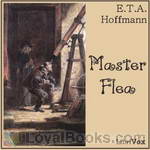 Master Flea
Master Flea
Ernst Theodor Wilhelm Hoffmann (1776 – 1822), better known by his pen name E.T.A. Hoffmann (Ernst Theodor Amadeus Hoffmann), was a German Romantic author of fantasy and horror, a jurist, composer, music critic, draftsman and caricaturist. Hoffmann's stories were very influential during the 19th century, and he is one of the major authors of the Romantic movement.He is the subject and hero of Jacques Offenbach's famous but fictional opera The Tales of Hoffmann, and the author of the novelette The Nutcracker and the Mouse King, on which the famous ballet The Nutcracker is based... | |
By: John Muir (1838-1914) | |
|---|---|
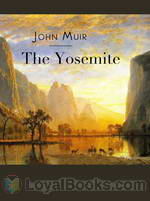 The Yosemite
The Yosemite
Anyone who's ever visited the Yosemite National Park will find this book a treasure trove of descriptions, information and evocations of the fabled beauty of this amazing piece of heaven on earth! The Yosemite by John Muir was published in 1912. Born in Scotland, England, this world-famous conservationist was a multi-talented genius. He was a geologist, naturalist, engineer, writer, botanist and a passionate and prolific writer on the preservation of the natural environment. His family migrated to America when he was just a few years old, the third of eight boisterous children... | |
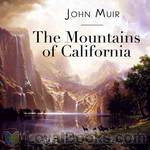 The Mountains of California
The Mountains of California
First published in 1894, this wonderful travelogue by a famed naturalist and conservationist still remains a book that delights and informs its readers. The Mountains of California by John Muir recounts the author's exploration of the Yosemite Valley, Mount Whitney, the famed sequoia forests and King's Canyon among other places of immense natural beauty. Written in his characteristic zestful style, with a deep understanding and respect for nature, the book is a treasure trove of geography, geology, botany, biology and sheer love of the magical planet we live in... | |
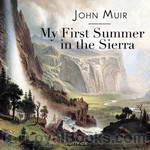 My First Summer in the Sierra
My First Summer in the Sierra
The journal of nature-lover John Muir who spent the summer of 1869 walking California’s Sierra Nevada range. From French Bar to Mono Lake and the Yosemite Valley, Muir was awestruck by everything he saw. The antics of the smallest “insect people” amazed him as much as stunted thousand-year old Juniper trees growing with inconceivable tenacity from tiny cracks in the stone. Muir spent the rest of his life working to preserve the high Sierra, believing that “the clearest way into the Universe is through a forest wilderness.” John Muir (1838-1914) was born in Dunbar, Scotland and grew up in Wisconsin, USA. This recording commemorates the 140th anniversary of that first summer. | |
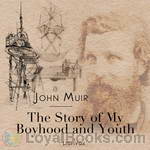 The Story of My Boyhood and Youth
The Story of My Boyhood and Youth
“The only fire for the whole house was the kitchen stove, with a fire box about eighteen inches long and eight inches wide and deep,- scant space for three or four small sticks, around which in hard zero weather all the family of ten shivered, and beneath which in the morning we found our socks and coarse, soggy boots frozen solid.” Thus, with perceptive eye for detail, the American naturalist, John Muir, describes life on a pioneer Wisconsin farm in the 1850’s. Muir was only eleven years old when his father uprooted the family from a relatively comfortable life in Dunbar, Scotland, to settle in the backwoods of North America... | |
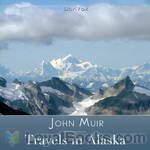 Travels in Alaska
Travels in Alaska
In 1879 John Muir went to Alaska for the first time. Its stupendous living glaciers aroused his unbounded interest, for they enabled him to verify his theories of glacial action. Again and again he returned to this continental laboratory of landscapes. The greatest of the tide-water glaciers appropriately commemorates his name. Upon this book of Alaska travels, all but finished before his unforeseen departure, John Muir expended the last months of his life. | |
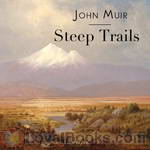 Steep Trails
Steep Trails
A collection of Muir's previously unpublished essays, released shortly after his death. "This volume will meet, in every way, the high expectations of Muir's readers. The recital of his experiences during a stormy night on the summit of Mount Shasta will take rank among the most thrilling of his records of adventure. His observations on the dead towns of Nevada, and on the Indians gathering their harvest of pine nuts, recall a phase of Western life that has left few traces in American literature... | |
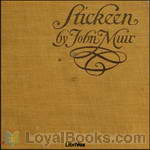 Stickeen
Stickeen
A great dog story, a well told tale — the naturalist and adventurer John Muir recounts how he and his companion, a dog named Stickeen, each, alone, confronted and conquered their fears of an icy Alaskan glacier in 1880. | |
 The Grand Cañon of the Colorado
The Grand Cañon of the Colorado
| |
 Cruise of the Revenue-Steamer Corwin in Alaska and the N.W. Arctic Ocean in 1881: Botatical Notes Notes and Memoranda: Medical and Anthropological; Botanical; Ornithological.
Cruise of the Revenue-Steamer Corwin in Alaska and the N.W. Arctic Ocean in 1881: Botatical Notes Notes and Memoranda: Medical and Anthropological; Botanical; Ornithological.
| |
By: Emily Bronte (1818-1848) | |
|---|---|
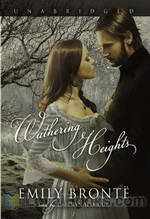 Wuthering Heights
Wuthering Heights
Emily Bronte’s first and only novel, Wuthering Heights, portrays the obsessive and vengeful love story between Heathcliff and Catherine. Images of cruelty and passion with an incorporation of gothic supernatural elements set the dark and misty atmosphere present throughout the novel. Moving between two neighboring houses, Wuthering Heights and Thrushcross Grange, the wild love story turned destructive obsession is narrated by Mr. Lockwood through his diary entries. Bronte sets the novel into motion with the arrival of Mr... | |
By: John Galsworthy (1867-1933) | |
|---|---|
 The Man of Property
The Man of Property
The first book in Galsworthy’s trilogy, The Forsyte Saga, The Man of Property revolves around the lives of the Forsytes, a self-conceited and cold family, who place a high value on propagating money and rising from their yeoman roots. The novel chronicles the events that lead to their inevitable demise, which is instigated by the stuffy man of property, Soames Forsyte, as he pursues the ideals of the preceding generation, whilst maintaining his own obsession with ownership. At the same time, Galsworthy candidly criticizes the values of the upper-middle classes, by means of satire, irony, a mixed array of realistic characters, an evocative setting, and an intricate plot... | |
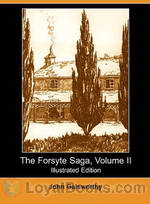 In Chancery (Vol. 2 of The Forsyte Saga)
In Chancery (Vol. 2 of The Forsyte Saga)
‘The Forsyte Saga’ is the story of a wealthy London family stretching from the eighteen-eighties until the nineteen-twenties. In Chancery is the second book in the saga. Five years have passed since Irene left Soames and the death of Bosinney. Old Jolyon meets Irene and is enchanted by her. At his death he leaves her a legacy sufficient for her to live an independent life in Paris. Soames, who is desperate for a son, attempts to effect a rapprochement but is rejected by her. Meanwhile Young Jolyon, now a widower who is Irene’s trustee, falls in love with her... | |
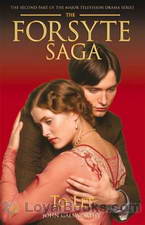 To Let (Vol. 3 of The Forsyte Saga)
To Let (Vol. 3 of The Forsyte Saga)
‘The Forsyte Saga’ is the story of a wealthy London family stretching from the eighteen-eighties until the nineteen-twenties. To Let is the third and final book in the saga (although Galsworthy later published two further trilogies which extend the story). We are now in 1920, about twenty years since Irene married Young Jolyon and gave birth to John and since Soames married Annette, who gave him a daughter, Fleur. The two sides of the family have not met since those times and John and Fleur do not even know of each other’s existence... | |
 Five Tales
Five Tales
This 1918 book consists of five short stories or novelettes by Galsworthy. They are The First and Last (1914), A Stoic, The Apple Tree (1916), The Juryman, Indian Summer of a Forsyte (1918) This last became part of the trilogy The Forsyte Saga. (Introduction by David Wales) | |
 The Forsyte Saga
The Forsyte Saga
| |
 John Galsworthy Works
John Galsworthy Works
| |
 Four Short Plays
Four Short Plays
| |
 Studies and Essays: Quality and Others
Studies and Essays: Quality and Others
| |
 The First and the Last
The First and the Last
| |
 The Dark Flower
The Dark Flower
| |
 Complete Plays of John Galsworthy
Complete Plays of John Galsworthy
| |
 The Little Man
The Little Man
| |
 The Eldest Son
The Eldest Son
| |
 Beyond
Beyond
Gyp, the daughter of ex-Major Charles Claire Winton, at the age of 23 marries Fiorsen, a Swedish violin virtuoso. Her mother, the wife of another man, has been Winton's mistress; she had died when Gyp was born. A highly sensitive child, Gyp has grown up in isolated surroundings with a kind, but very British, father. As she gets older her father tries to introduce her into society. An attack of gout takes him to Wiesbaden for a cure and, as he never goes anywhere without her, she accompanies him... | |
 The Fugitive
The Fugitive
| |
 Images from Works of John Galsworthy
Images from Works of John Galsworthy
| |
 Windows
Windows
| |
 Strife
Strife
| |
 The Burning Spear
The Burning Spear
| |
 A Bit O' Love
A Bit O' Love
| |
 Six Short Plays
Six Short Plays
| |
 Loyalties
Loyalties
| |
 Skin Game
Skin Game
A small play in three acts. A kind of comic tragedy. The plot tells the story of the interaction between two very different families in rural England just after the end of the First World War. Squire Hillcrist lives in the manor house where his family has lived for generations. He has a daughter, Jill, who is in her late teens; and a wife, Amy, as well as servants and retainers. He is "old money", although his finances are at a bit of low ebb. The other family is the "nouveau riche" Hornblowers,... | |
 Villa Rubein, and other stories
Villa Rubein, and other stories
| |
 The Freelands
The Freelands
| |
 The Island Pharisees
The Island Pharisees
| |
 The Patrician
The Patrician
| |
 Studies and Essays: Censorship and Art
Studies and Essays: Censorship and Art
| |
 Another Sheaf
Another Sheaf
| |
 Tatterdemalion
Tatterdemalion
| |
 Joy
Joy
| |
 The Foundations
The Foundations
| |
 Saint's Progress
Saint's Progress
| |
 The Pigeon
The Pigeon
| |
 The Little Dream
The Little Dream
| |
 The Mob
The Mob
| |
 Inn of Tranquillity
Inn of Tranquillity
| |
 Studies and Essays: Concerning Letters
Studies and Essays: Concerning Letters
| |
 Plays : Third Series
Plays : Third Series
| |
 Plays : Fifth Series
Plays : Fifth Series
| |
 Plays : First Series
Plays : First Series
| |
 Plays : Second Series
Plays : Second Series
| |
 Plays : Fourth Series
Plays : Fourth Series
| |
By: William Butler Yeats (1865-1939) | |
|---|---|
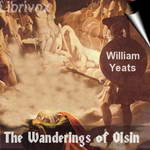 The Wanderings of Oisín
The Wanderings of Oisín
This narrative poem is composed in three parts, and consists of a dialogue between the aged Irish hero Oisín and St. Patrick. Oisín relates his three-hundred year sojourn in the immortal isles of Faerie. In the isles, Oisín married the beautiful Sidhe Niamh: together they traveled, feasted, and quested. At last Oisín succumbs to the temptation to return and visit the lands of mortal men: inadvertently slipping from his faerie horse, his body touches the ground and instantly puts on the flesh of a decrepit old man. Oisín describes various islands and what he did there: contrasting his noble deeds with the degenerate weakness of the present generation. | |
By: Dorothy L. Sayers (1893-1957) | |
|---|---|
 Whose Body?
Whose Body?
The first novel in her renowned series of detective fiction, Sayers introduces Lord Peter Wimsey, a bon vivant gentleman, whose hobby of playing detective is put to the test, as he is launched into his first official crime investigation. The mystery begins when the body of an unidentified man has been found in the bathtub of local architect Mr. Thipps. Adding to the peculiarity of the situation is the fact that the corpse is stark naked except for a pair of expensive pince-nez glasses. Due to the incriminating circumstances of the murder, the official investigator suspects Thipps to be the perpetrator of the bizarre murder... | |
By: Kurt Vonnegut (1922-2007) | |
|---|---|
 2 B R 0 2 B
2 B R 0 2 B
In this chilling short-story by a master of the craft, Kurt Vonnegut creates a fictional world of the future where life and death are no longer matters of individual choice or destiny. The title refers to the famous quote from Hamlet, “To be or not to be....” with “0” being pronounced as “naught.” It also refers to the eternal dilemma of life and death that face every human being at some point in their lives. Written in 1962 it is set in some unspecified time in the future, when earth has become a Utopia... | |
 The Big Trip Up Yonder
The Big Trip Up Yonder
| |